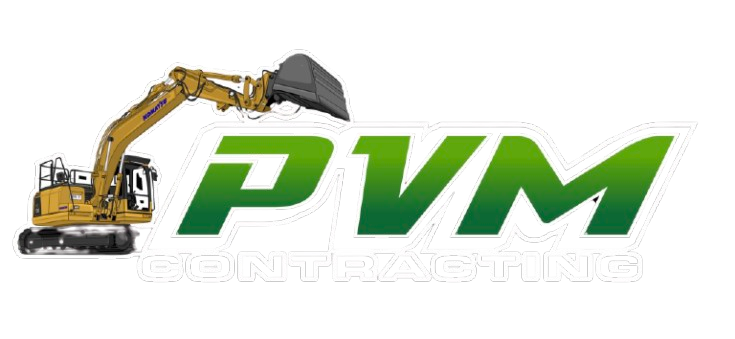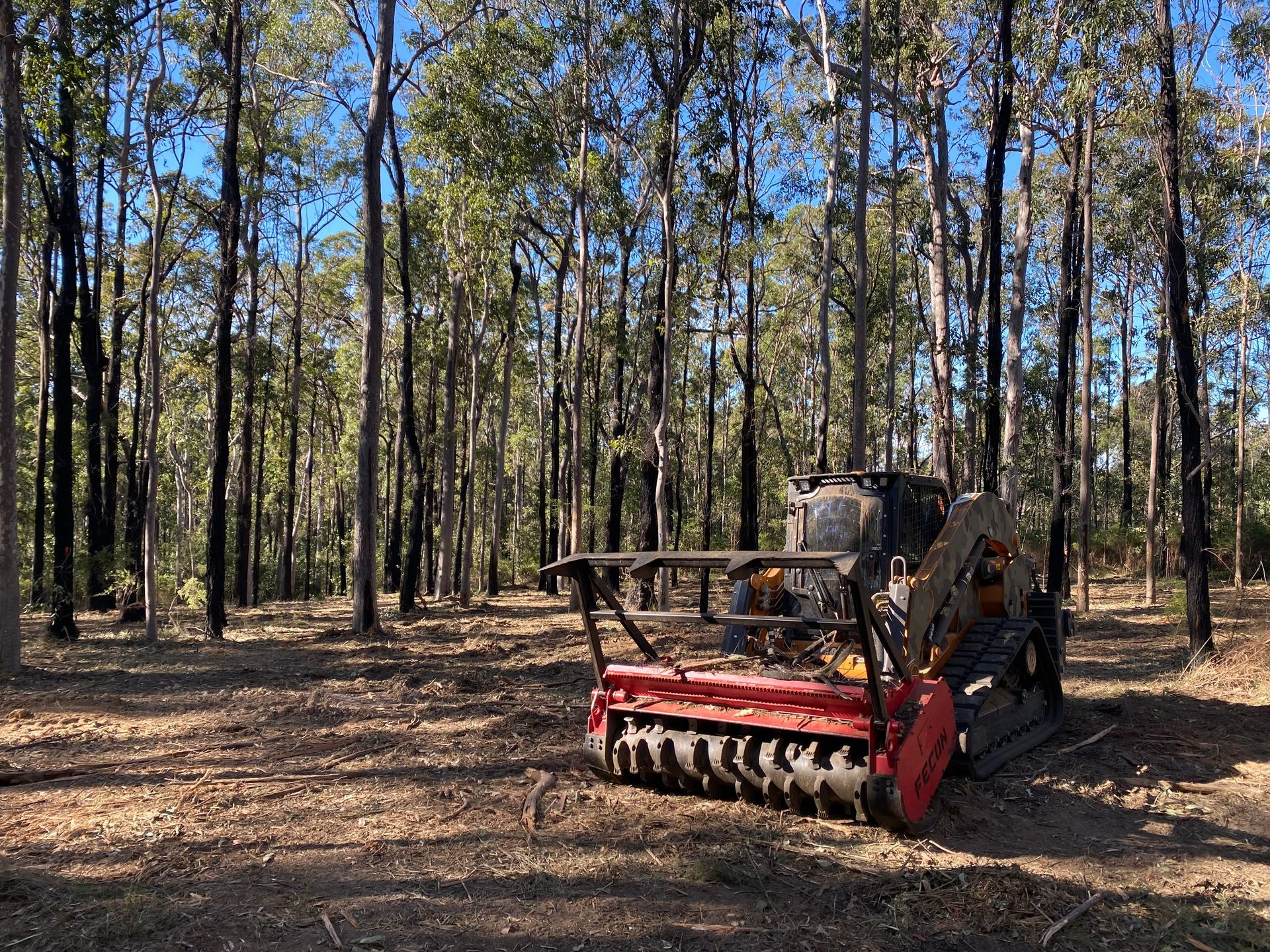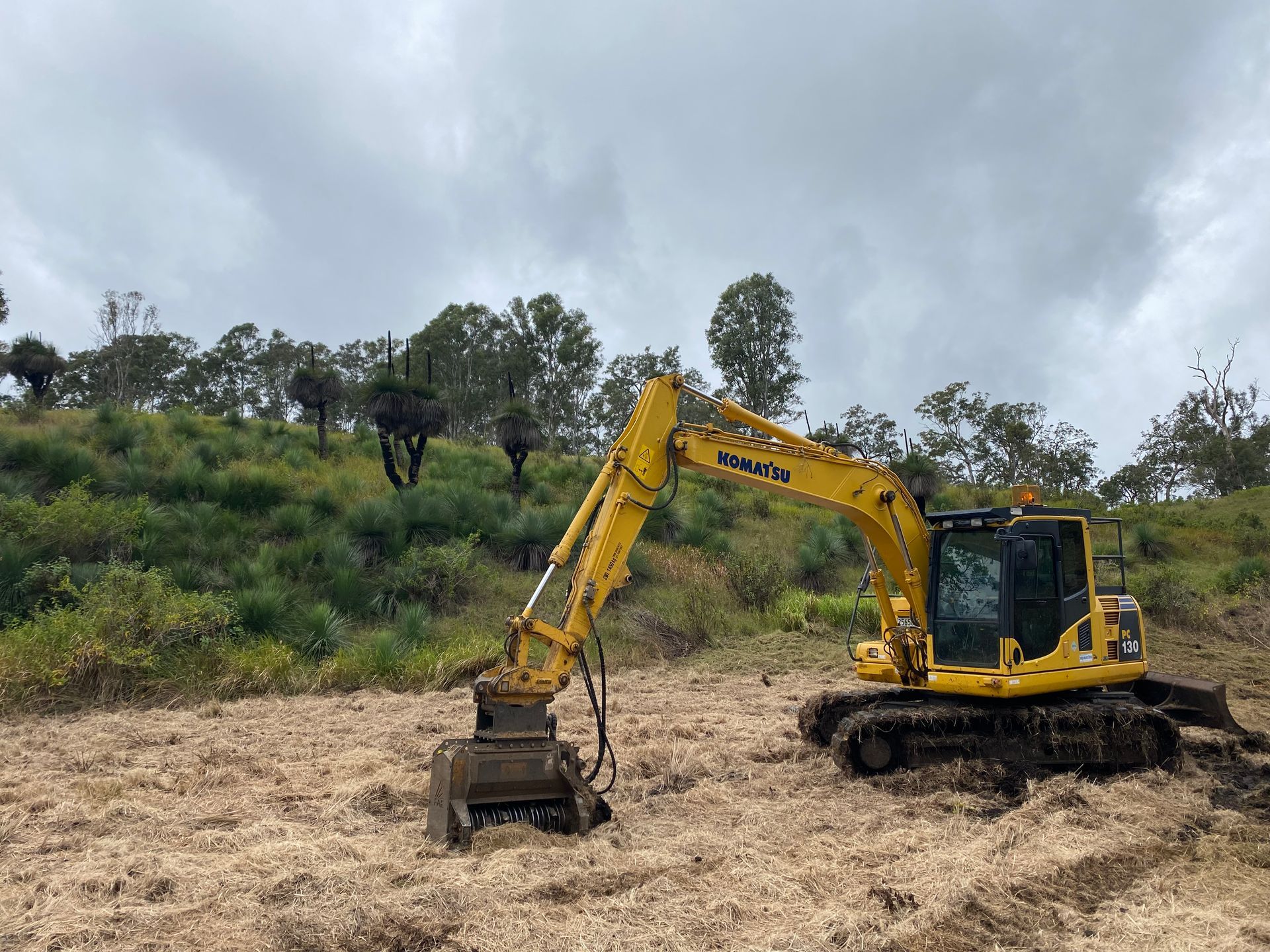PVM COntracting
Land Clearing
in the Northern Rivers
Fully insured and Chemcert certified, we deliver efficient, cost-effective earthmoving and vegetation services across the Northern Rivers.
Safe Preparation
Northern Rivers Land Clearing
Clearing overgrown, tree-covered or unmanaged land takes more than just brute force — it requires planning, equipment and a strong understanding of local conditions.
At PVM Contracting, we support clients across the Northern Rivers with land clearing, site clean-up and environmental management services that meet council and project requirements. From small residential blocks to large-scale rural lots, we handle everything from tree felling and mulching to slashing and regrowth control.
Clearing work can be completed as part of subdivision prep, house pad construction, civil works or general property improvement. Whether you’re removing lantana, levelling paddocks, or prepping a commercial development site, clearing must be done safely and with erosion control in mind.
With practical equipment and years of field experience, we make clearing faster, safer and easier to manage. To get started, call
0466 883 668
and ask about clearing solutions that suit your site and schedule.
Get a Free Quote
Thank you for contacting PVM Contracting.
We will get back to you as soon as possible.
Oops, there was an error sending your message.
Please try again later.
Need Help?
Frequently Asked Questions
What permits are usually required before clearing land?
Permit requirements vary depending on property zoning, vegetation type and whether protected flora or fauna habitats are present. Local councils often require approval for tree removal above a certain diameter or height, especially within residential zones or mapped vegetation corridors. Clearing near watercourses, on sloped land, or in bushfire-prone areas may require additional assessment under state environmental or fire safety regulations. Skipping permits can result in fines, delays, or mandatory restoration work — so it’s worth confirming early.
How can land clearing affect soil and drainage?
Poorly planned clearing can lead to soil erosion, compaction and disrupted water flow — especially on sloped or flood-prone land. Removing too much vegetation too quickly can expose the topsoil to wind and rain, leading to nutrient loss and sediment runoff. Drainage issues may follow if roots that once stabilised the area are removed without adding new erosion controls. Ground disturbance should be balanced with strategies like retaining buffer strips, installing sediment fencing, or staggering clearing works.
What happens to vegetation or debris after clearing?
There are several options for post-clearing waste: mulching in place, carting off-site, or burning — depending on local laws and material type. Mulching is often preferred as it returns nutrients to the soil, improves moisture retention and reduces the cost of transport. Green waste facilities may accept cleared material, but larger debris or invasive plants might need to be handled differently. Burning may be permitted in some rural areas with fire permits, but restrictions usually apply during high-risk seasons.
Vegetation control
Make Your Site Build-Ready
Effective clearing makes construction and access work easier — and keeps your site compliant with council or fire safety guidelines. It's often the first step in transforming raw land into a usable space, and the results directly affect how easily you can move into excavation, drainage or construction.
For larger sites or rural properties, the process may also involve firebreak creation, fence line access, or staged clearing to reduce soil disturbance. Techniques like mulching, cut-and-carry removal or erosion matting can be used to suit different terrain and site goals.
Well-managed clearing reduces regrowth issues and ensures ongoing maintenance is easier and cheaper over time. It also supports sustainable land use, preventing unmanaged growth from becoming a hazard or obstacle down the line.
The right clearing approach depends on your goals, site conditions and timelines — and it’s worth planning carefully to get the best outcome.






